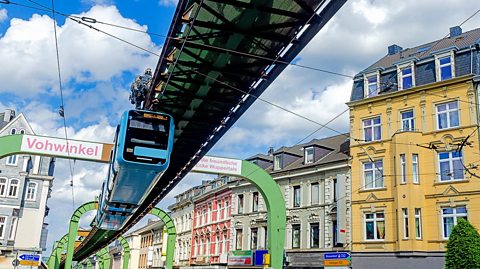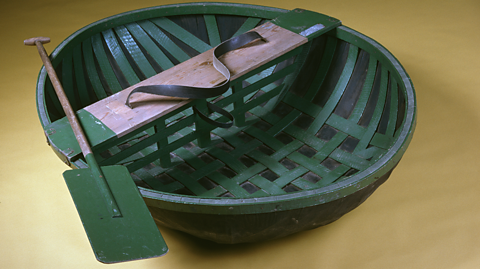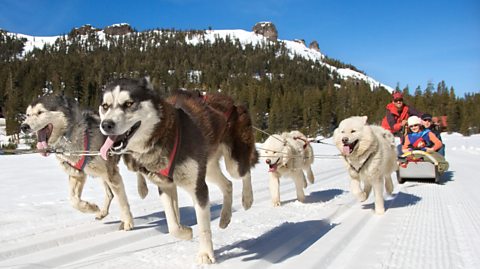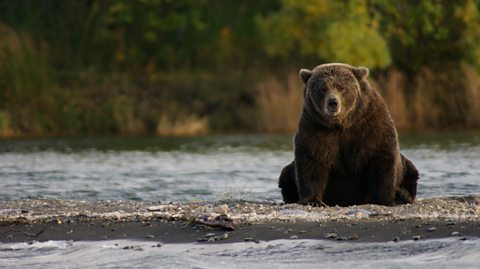Cars, trains, boats and bikes - all common ways of getting from A to B.
But some countries also have their own unique ways of travelling. In addition to being an important part of everyday life, these means of transport are often connected to a country's history and geography.
From rowing in an ancient boat in Wales to mushing through the Arctic, Â鶹Éç Bitesize looks at four brilliant forms of transport from around the world.

1. The Wuppertaler Schwebebahn
Germany’s suspension monorail is one of the closest modes of transport you’ll get to a flying train. The Schwebebahn officially opened on 1 March 1901 and holds the record for the oldest electric elevated railway with hanging cars in the world.
A landmark of the western city Wuppertal, the monorail travels 13km (eight miles) across 20 stations - 16 of which run across the city’s river Wupper. Each of the stations has its own distinct architecture, from the modern glass construction station Kluse to art nouveau station Werther Brücke.
With top speeds of 60kph (37mph), the entire route can be covered in just 30 minutes. Not only has the speedy train become the city’s landmark, but it’s also an everyday means of transport for Wuppertal residents. In fact, it is estimated that more than 80,000 people use it on a daily basis.

2. Coracle
A coracle, otherwise known as a cwrwgl or a curragh, is a one-person boat that dates back over 2,000 years, to pre-Roman times. Historically the coracle has been used for transport, fishing and even postal deliveries. The boat’s small bowl-shaped frame is typically made from woven reeds, grasses or saplings covered with hides.
The coracle is believed to be one of the first, if not the first, form of water transportation and coracle fishing may be one of Britain’s oldest traditions. Licensed coracle fishers still use the boats today, particularly on the River Teifi, River Towy and River Taf in South Wales and the River Dee in North Wales.
However, its use is not limited to Wales - they are also used on the coasts of the Republic of Ireland. Similar boats have been built and used by different cultures and can be found in many countries across the world, including India, Iraq and Tibet.

3. Toboggan rides
On the island Madeira and in the Portuguese village of Monte is a steep and bendy road connecting it to the sea level city Funchal. To get from the top of the hill to the bottom, locals and visitors can take a high-speed journey in large wicker baskets knows as toboggans.
The journey takes approximately 10 minutes in total, starting below the steps of the Monte Church and ending in Livramento, a suburb of Funchal. The rides are supervised by people called Carrieros who wear straw hats and rubber-soled boots which act as a breaking mechanism. Carrieros guide the toboggan on its 2km (1.2 mile) trip down the hill and make sure riders don’t run off course. The ride can reach speeds up to 38kph (23.6mph).
The journey between the two locations has taken place since the 19th Century, at a time where inhabitants used the basket sledges as a rapid means of transportation. They are now used by thousands of tourists each year.

4. Dog sledding
While dogs have played a crucial role in human history in the Arctic for thousands of years, surprisingly little is known about the history of dog sledding. The tradition of dog sledding is believed to have origins in the Indigenous communities of the Far North.
The world’s oldest depiction of a sled dog is thought to be on a 2,000 year old knife. Discovered in the Siberian Arctic site of Ust'-Polui, archaeologists argue the carved knife handle may illustrate a sled dog wearing a harness.
Sled dogs are typically large, strong dogs with thick coats and high endurance levels. Breeds such as the Alaskan Malamute, Samoyed and Siberian Husky are most commonly associated with sled work.
During the 20th Century, sled dogs were used for freight hauling and post deliveries in Alaska and Yukon. Fast-forward to today and sled dogs are still used in some rural communities, particularly in areas of Alaska, Canada and Greenland. Here they are still used for transportation, working purposes and racing events, otherwise known as mushing.
This article was published in October 2023
Five fun behaviours we have in common with animals
Do animals share our creature comforts? Find out with these five fabulous animal facts.

How are birthdays celebrated across the world?
From celebratory songs to delectable sweet treats, Â鶹Éç Bitesize takes a look at some of the ways birthdays are celebrated across the world.

TikTok's favourite bears: What is Fat Bear Week?
Otis, Holly and 747 are TikTok legends, but what does it mean to be a Fat Bear Week Champion? Learn more with Â鶹Éç Bitesize.
